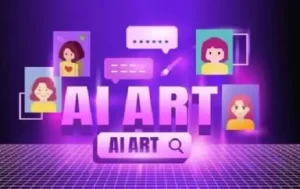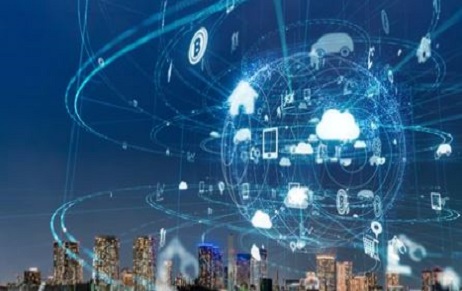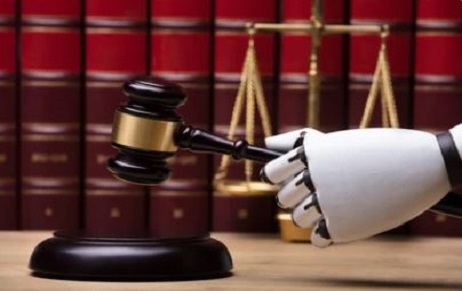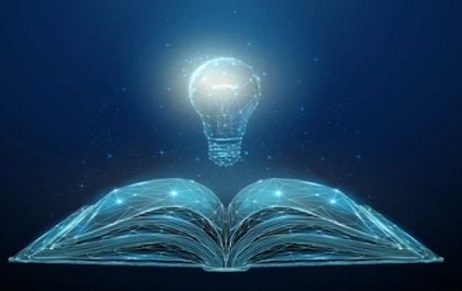A new era started with the innovation of Artificial Intelligence (AI). AI systems can produce…
A Legal Analysis Of The Issues Surrounding Copyright And Ai -Generated Artwork
Introduction
A brand-new genre of digital art is pushing the limits of creativity and upending the way art is created. Building autonomous robots for collaboration, feeding data into algorithms, and teaching machines to produce new visual works are all practises used by artists. They operate with computer programmes that replicate the human mind to develop a never-ending stream of unique artworks. The use of artificial intelligence as a creative partner has gained popularity.
One of the core qualities of a certain piece of artwork or creation that enables it to be eligible for a copyright is that of “Originality”. The aspect of novelty sits at the very core of the copyright system. The concept of “originality” presupposes an origin stemming from a human, thereby bringing an essential requirement of ‘human authorship’ to the work. Long before AI picked up the paintbrush, the copyright ownership in respect to computer program generated works was not an issue because such programms and tools were merely instrumental and supporting agents in the creative process. An example of such a program would be MS Paint. This acts as a mere tool that enabled the creator to express his notion. However, years later, we stand in front of the ever-growing mammoth that is,technology, and with the advent of AI, the perception and aspects of art and creative works changed forever.
[Image Sources : Shutterstock]

A wealth of technical best practises and interpretive conventions have been developed in the artificial intelligence (AI) sector for creating computers whose behaviour can be described, often seen as a smart pastime. Artists have started integrating AI approaches into cultural production, or the creation of artefacts and experiences that serve as works of art within the cultural field. This brand-new branch of Al-based creative creation known as expressive Al combines artistic techniques with Al-research techniques.AI assistants that analyse artworks and pick up on each artist’s own style can assist conservators in recreating long-lost masterpieces from art history.
Machine learning, which employs a variety of self-learning algorithms that draw information from data, enables AI to create original creations. AI systems and artists work together to create AI art, although the degree of autonomy can vary greatly and the final product is highly dependent on the calibre of the data the AI is trained on.
The Bot And The Novelty
The massively significant question that is raised here is, whether the art generated by AI classifies as original or inspired art.
Even the human brain, which is the stemming point for creation, may not be capable of generating an idea or a convention that is purely, unbiasedly its own. Every single artpeice, creative work, literary work, design, and notion is influenced and inspired by the society around, even if said influence amounts to a negligible percentage. If this is the case with humans, there is no doubt that AI, which itself is human-generated invention, cannot generate works which are not inspired from others.
‘AI’ artwork generators like DALL·E and Stable Diffusion, provide users the option to swiftly produce detailed graphics based on prompts, which can be anything you think of.
The Legal Implication
This new era of AI domination of the art industry has threatened to end the already declining careers of millions of artists. Not only does this stand in the way of artists and creators earning their daily bread, but also ruffles feathers in the legal scenario. The concept of AI art has caused several legal issues and problems.
For instances, the images generated and created by AI constitute tiny fragments of multiple thousands of images and paintings and creations distinctly put together to produce the new artwork. The issue arises where the artwork used by the AI to generate new images or pieces based on the language input are actually copyrighted, and the rights vest with a particular person somewhere in the world. The final end result of a certain piece of AI artwork cannot have a copyright traceable back to a single person. However, the art and the sources used to generate ,induce and influence the final algorithm often is protected by copyright, owned by a person, thereby leading to significant innfringement issues.
The creators behind these images face copyright infringement because the final image generated by the AI is not subject to copyright , therbby open to free use. This indirectly, in a domino effect reduces the economic value of the artists’s work.
Though it can be argued that even AI generated artwork must be granted copyright , the contrary has certain non-dissmisable implications.
Supporters of the latter , that AI generated artwork must be a subject matter of copyright, are primarily the corporates and tech companies that program, code and own these AI generation softwares. It can be argued from their end that if the very basis of generation of income by the software is cut off, by making it freely available for use by everyone( by keeping it out of the purview of copyright) is shook, the investors shy away from supporting the development of such software.
This would be a significant disadvantage to the industry as a whole.
Conclusion
The question of whether AI-generated artwork should be granted copyright is a complex and evolving issue. Currently, copyright law in most countries is based on the idea of originality, which is difficult to apply to works created by AI. Some argue that AI should be considered a tool or a collaborator rather than a creator, and that copyright should be granted to the human who programmed or trained the AI. Others argue that AI-generated artwork can be truly original and should be granted copyright in its own right.
As AI becomes more advanced and creates increasingly complex and sophisticated works, this issue is likely to become even more pressing.
Author : Ananya Arun, A Student at National University Of Advanced Legal Studies, Kochi, in case of any queries please contact/write back to us via email to [email protected] or at IIPRD.
- https://www.theverge.com/2023/1/16/23557098/generative-ai-art-copyright-legal-lawsuit-stable-diffusion-midjourney-deviantart
- https://www.wipo.int/wipo_magazine/en/2017/05/article_0003.html
- https://www.makeuseof.com/copyright-rules-ai-art/
- https://www.reuters.com/legal/ai-created-images-lose-us-copyrights-test-new-technology-2023-02-22/
- https://itsartlaw.org/2022/11/21/artistic-or-artificial-ai/
- https://www.lexisnexis.com/community/insights/legal/practical-guidance-journal/b/pa/posts/ai-can-create-art-but-can-it-own-copyright-in-it-or-infringe
- https://www.dentons.com/en/insights/articles/2023/january/27/ai-generated-images-and-copyright



